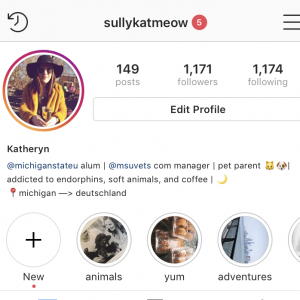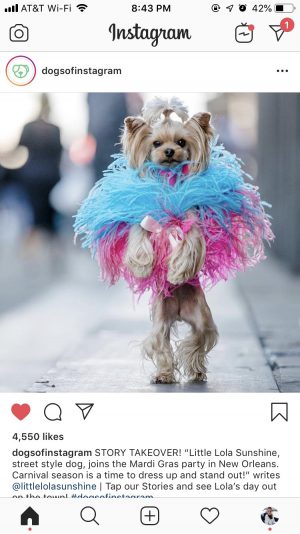
People of all generations depend on social media in some form or another; baby boomers and Generation X rely on Facebook for learning about social events, staying up-to-date on their distant granddaughter’s college happenings, and reliving the drama of high school. Millennials would be lost without Twitter and Instagram, #AmIRight? And Generation Z uses memes and Snapchat's puppy-face filters as forms of communication. But no matter what age, all social media users love to see animals in their feeds.
I, as a millennial, feel the need to tweet videos of my animals when they’re sleeping and I retweet posts that have the hashtag #PetsArePeopleToo. I have a highlight channel on my Instagram called “animals” because I’m #obsessed. I’ll be the first to admit that I am more emotional about animals than I am about people. Whether that means something is wrong with me or not, I know I’m not alone in this. There’s a reason why people of all ages have pets and why all those different generations of people post pictures, videos, memes, etc. of their pets on social media. You all know who I’m talking about—those people who dress their pets in clothes, talk to them in baby voices, and record every moment of their pet(s) life. It’s nothing to be ashamed of; (almost) all of us do it.

In a time where pets are anthropomorphized more than ever, people feel the need to create an environment where the lives and experiences of their pet(s) are similar to their own. A language dedicated to talking about animals, with rules and everything, is a thing now. The top animal hashtags on social media include “animals” as number one; “kids” and “children” as numbers five and six. These are preceded by “love,” “life,” and “care.”
I love my animals. They make my life better. I care about them just much as I imagine a parent cares about a child, and they care about me (or so I assume from the longing eyes, wagging tails, and nuzzles that are always present when I return home after being away from them). If I had it my way, I would be with my animals every second of every day—and I’m not alone. In Europe, dogs are allowed in restaurants and shopping malls and on public transportation (BringFido.com reveals this is a thing in the United States too!). In Mt. Pleasant, Michigan, there’s a café called Karma Kat Café.

Us pet parents are obsessed with our pets. We get all goo-goo gah-gah heart-shaped-emoji-eyed when we look at them—#irl and on our social media feeds. We think for them, talk for them, ache for them when they aren’t around, anthropomorphize them (check out the top posts for #dogsofinstagram and #catsofinstagram), and even project our emotions onto them (I am very much guilty of this).
I have a theory: this need to intertwine our pets so deeply into our lives—digital and otherwise—is connected to the natural human need to feel needed. Pet owners enjoy that their animals need them—and that they, in turn, need their animals. It makes sense that we as humans become so attached to our pets. In fact, there’s a term for that—one that describes our connection to our pets; it’s called the human-animal bond. The American Veterinary Medical Association defines the human-animal bond as a “mutually beneficial and dynamic relationship between people and animals that is influenced by behaviors that are essential to the health and wellbeing of both.”

Though the ties are invisible, the human-animal bond is strong—and, according to research, it will continue to grow. Thanks to the study of hormones like oxytocin, cortisol, epinephrine, and norepinephrine, pet owners have scientific evidence as to why having pets is good for them. As a result, us pet owners, aka pet parents or pet mommy’s and daddy’s, want to reward our pets and make them happy because they make us happy—that sounds mutually beneficial, right?
But we don’t know exactly what our pets are thinking, or feeling do we? So, we anthropomorphize them because they love us and we love them, so we must feel some of the same emotions and want some of the same things, right? (I mean, Mr. Jeffer-doo’s big brown eyes are just begging me to make him an Instagram—what else could they be saying?).
This projection of emotion and desire, though it may be rooted in the human-animal bond, has evolved into more than a connection and mutually beneficial relationship; it’s turned our pets into real-life, cuddly, loving, needy, insta-famous beings; and now, thanks to social media, everyone knows it.
